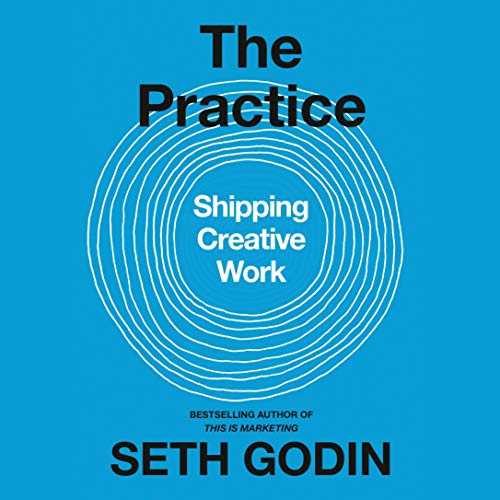I recently read the book The Practice by Seth Godin, which helped me better articulate the mental framework between life as an employee and life as an entrepreneur. As entrepreneurs, we engage in what Seth calls creative work. Creative work is about trying to make things better, even when there are no guarantees of success. Whether you are a volunteer leading a cause or an entrepreneur starting a new business, you are stepping into the unknown, taking risks without the assurance that things will work out as planned.
Every day, each of us faces a choice: we can opt for the creative path or succumb to fear and unintentionally become a hack, a hustler, or a cog. Let’s dissect these roles:
- The Hack: The hack is afraid to try anything new, so they copy what already works without seeking to improve it. They play it safe, avoiding any risks.
- The Hustler: A hustler is driven by short-term goals and personal gain. While the hustler has the courage to attempt something untested, it’s often for selfish reasons, focusing on personal benefits rather than the greater good.
- The Cog: The cog wants to remain comfortable following instructions within an established system. They avoid shaking things up or striving for improvement. As the world evolves, systems need upgrades and cogs risk being left behind or replaced.
By choosing the creative path, you increase your odds of developing a unique voice, producing original work, and achieving meaningful change. However, there’s a catch: when you embark on the creative path, you’ll often feel like an imposter.
Embracing Imposter Syndrome
Feeling like an imposter is a common experience for those who choose the creative path. When you try something new and novel in the hopes of making things better, it’s natural to feel like you don’t know what you’re doing simply because it is new and has not been done before. You might feel that people are judging you and even think you’re a fraud.
But here’s the secret: every entrepreneur trying to start a new business goes through the same struggle. They recognize that they’re doing something that might not work, but to challenge the status quo, they must act as though they know what they’re doing. In the words of Seth Godin, “The imposter is proof that we’re innovating, leading, and creating.”
Imposter syndrome can be a motivation killer if it is not addressed. Seth recommends establishing a creative practice as an effective way to combat imposter syndrome. He defines “creative practice” as dedicating one hour a day to the practice. Over time, he says, you will learn to trust yourself and keep moving forward, despite feeling like an imposter.
Your creative practice should revolve around an area where you want to develop a unique voice and help others. It could be writing, coding, drawing, recording podcasts, offering one-on-one coaching, or even cooking. Regardless of the medium, the ultimate goal is universal: learn to love the process and become indifferent to the results.
Focus on the Practice, Not the Outcome
Seth Godin uses a story about how he learned fly fishing to illustrate the ideal creative practice mindset. When he took a fly fishing class, he requested a rod with a fly but no hook. This puzzled his instructor, but Seth persisted. The absence of a hook allowed Seth to focus solely on the practice of casting rather than fixating on the immediate outcome of catching a fish.
The rest of his class was fixated on catching a fish even though they had yet to master proper casting techniques. Soon many became impatient and lost focus, leading many of them to just give up. Seth emphasizes that if a hook had been added to his line during practice, he would have been far more likely to focus on catching a fish vs. mastering the art of the cast and mending the line to get a good drift. The catch should be a side effect of the practice, not the primary goal.
Measuring Creative Progress
Two essential metrics help measure creative progress: the size of your discard pile and the amount of work you’ve shipped in the last year.
Discard Pile
The size of your discard pile represents the number of rejected ideas, drafts, or attempts you’ve accumulated. Creative geniuses are willing to generate more bad ideas and produce work that might end up in the trash to find the good ones. Your discard pile could be lines of code that didn’t work, ideas that didn’t become successful products, or designs that went unnoticed on social media.
If you’re unwilling to build up your “no” pile, you’ll never grow your “yes” pile. Your creative practice should involve pushing boundaries, taking risks, and embracing failure as a stepping stone to success.
Shipping Your Work
The second metric is the amount of work you’ve shipped in the last year. Seth emphasizes that creativity isn’t about being creative but about shipping your work. Shipping means presenting your work to the world, saying, “Here, I made this,” and taking responsibility for it.
This work doesn’t have to be free; it simply needs to have the potential to exceed expectations. You made it, which implies effort, experimentation, and skill. Shipping your work means saying, “I deliver.” It’s a commitment to your audience or customers and how you build trust and credibility.
Making Shipping a Rule
To ship more of your work, make shipping a rule, not a choice. Tell yourself, “I deliver,” and commit to specific dates or schedules. For example, you might commit to delivering a video to your premium subscribers every Sunday. As a personal example, I deliver at least two blog posts to my audience weekly. I have been doing this since 2014. It has become part of who I am and what I do.
There will be days and weeks when you don’t feel like shipping, but when you commit to shipping on a particular date, you’ll find the creative energy to produce quality work, even at the eleventh hour. Start with low-stakes shipments, such as sharing your work with friends or family who support your creative journey.
Conclusion: Trusting the Road
In the end, creative work is like driving a car at night. You can’t see what’s far ahead of you on the horizon; you can only see what’s in front of you, illuminated by your headlights. Trusting the road is akin to trusting your daily creative practice to lead you to your destination.
Staying on the road takes skill, and you develop that skill by learning to love the process, being willing to grow your discard pile, and shipping your work regularly. By focusing on the process, expanding your “no” pile, and delivering your work consistently, you’re well on your way to producing original work and making things better.
Seth Godin reminds us that things can improve, but not if we settle, hide, or stick to the familiar paths. Your contribution is needed, but it can only happen if you trust yourself enough to do the work. By embracing uncertainty, battling imposter syndrome, and shipping your creative work, you’ll play an essential role in effecting positive change in the world.
How can you follow your creative path?












